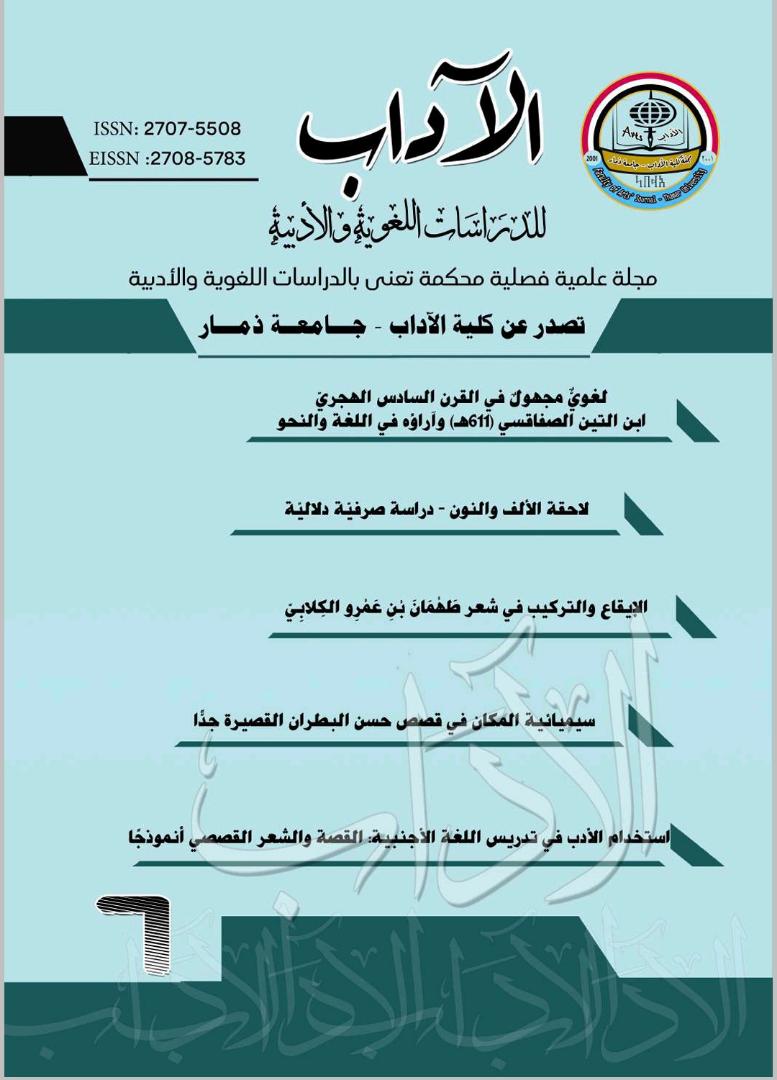Thresholds in the Interpretation of Liberation and Enlightenment by Ibn Ashour: A Semiotic Approach
DOI:
https://doi.org/10.53286/arts.v1i7.280Keywords:
Thresholds, Interpretation, Liberation, Enlightenment, Ibn AshourAbstract
This research attempted to identify the thresholds in the interpretation of liberation and enlightenment by Ibn Ashour with a view to explore is the characteristics of this interpretation, and to reveal the extent to which these thresholds are related to the original text. The study relied on a method determined by the nature of the research, which is the ‘semiotic’ method within the framework of Genette’s model thresholds analysis through focusing on two of its principles; the functional and the pragmatic principles. The study is organized into a preface, an introduction, two sections and a conclusion. It concluded with several findings such as, (Ibn Ashour) succeeded in choosing the title of his interpretation which was open to multiple functions. On the other hand, this title revealed to us the influence of the Western culture on (Ibn Ashour). The two thresholds: the (preface) and the (Ten Introductions), emerged with a systematic explanatory function, enabling the recipient to read the original text well. Awareness of (Ibn Ashour) of the pragmatic process in his address to each recipient according to his own condition was evident. There is an interactive dialectical relationship of mutual influence between the thresholds and the original text, i.e. between the outside and inside. Both of them echo each other. These thresholds revealed (Ibn Ashour's ideology) that adopts the reformist dimension, whether at the individual or community level.Downloads
Downloads
Published
How to Cite
Issue
Section
License
Copyright (c) 2021 إبراهيم بن محمد هجري

This work is licensed under a Creative Commons Attribution 4.0 International License.
Copyright and Licensing
copyright is retained by the authors. Articles are licensed under an open access Creative Commons CC BY 4.0 license, meaning that anyone may download and read the paper for free. In addition, the article may be reused and quoted provided that the original published version is cited. These conditions allow for maximum use and exposure of the work.



